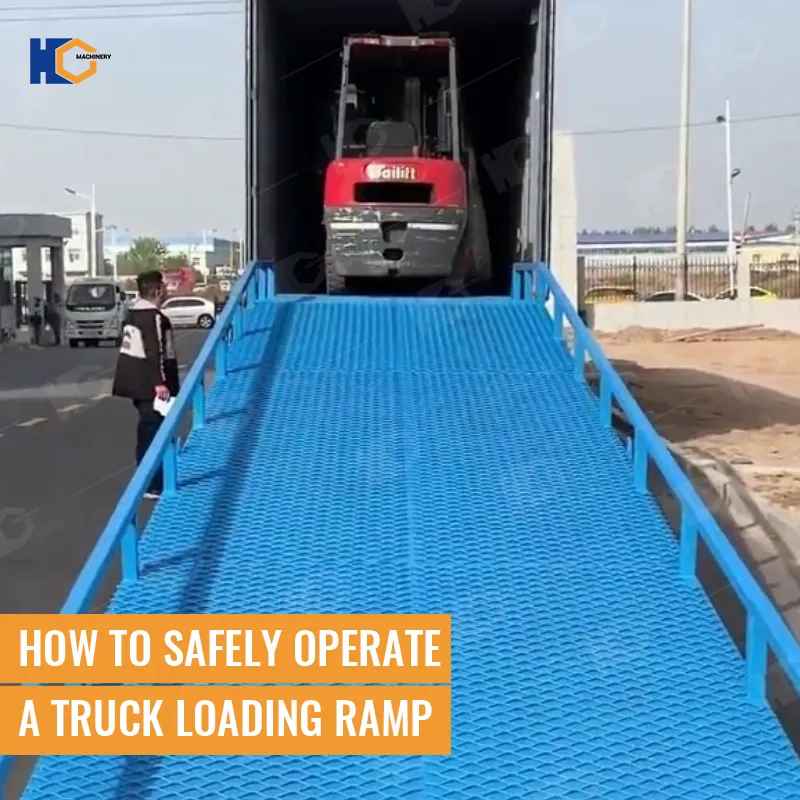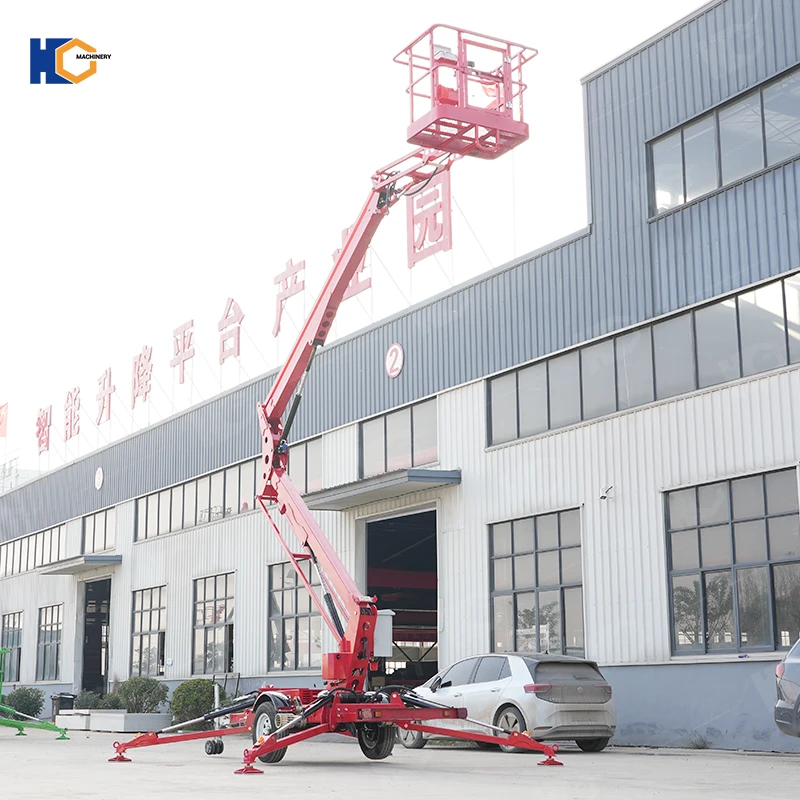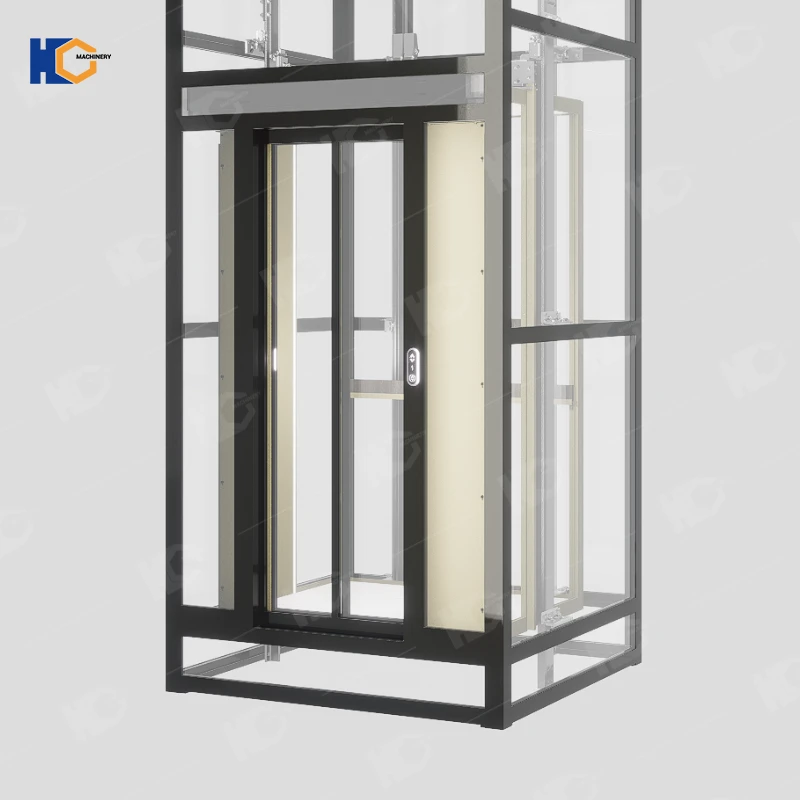Truck loading ramps are essential tools in transporting goods in and out of trucks, warehouses, and other loading platforms. They allow for the smooth transfer of cargo from ground level to the bed of a truck or vice versa. However, while these ramps are designed to make loading and unloading easier, they also come with inherent risks. A misstep or oversight during ramp operation can lead to injuries, accidents, or damage to goods.
The purpose of this guide is to provide a detailed overview of how to safely operate a truck loading ramp. By following the correct procedures, workers can avoid accidents, reduce equipment wear, and ensure the safe transport of goods.
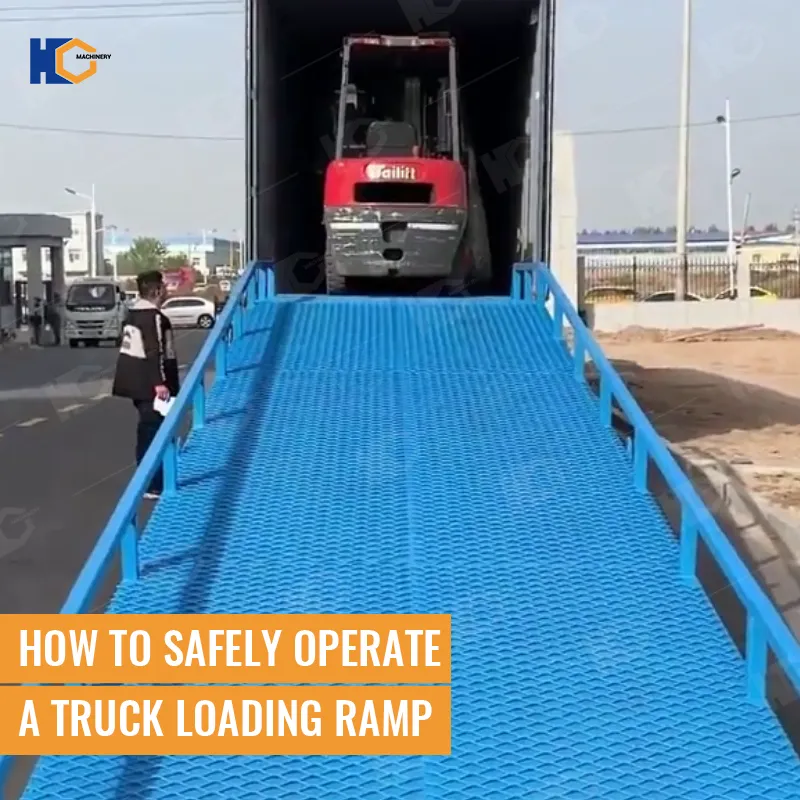
Understanding the Loading Ramp
A truck loading ramp is a sloped platform designed to bridge the gap between a truck and the ground or another loading area. There are various types of ramps, and they differ based on the specific needs of the operation. Some common types of loading ramps include:
Manual Ramps: These ramps are often lightweight and portable, requiring manual labor to adjust them. They are usually constructed from aluminum or steel.
Hydraulic Ramps: These ramps are powered by hydraulic mechanisms that make raising and lowering easier and more efficient.
Foldable or Telescopic Ramps: These ramps can extend or fold to adjust the length and height for different vehicles and cargo.
Mechanical or Powered Ramps: These ramps can be adjusted automatically, often found in larger warehouses or logistic operations where large quantities of goods are moved.
Each of these types of ramps may have different loading capacities, materials, and safety features. It’s crucial to understand the type of ramp you're working with to ensure safe operations.
Pre-Operation Safety Checks
Before beginning any loading or unloading operation, it’s essential to perform a series of safety checks on the ramp and surrounding environment. Ensuring that the equipment is in good condition and the area is clear of hazards can prevent accidents and damage.
Inspecting the Ramp
Structural Integrity: Inspect the ramp for any visible cracks, rust, or damage. If the ramp is metal, ensure there are no weak points, bends, or corrosion. If the ramp is wooden, check for splinters or weakened joints.
Secure Attachment: Ensure that the ramp is securely attached to the truck or platform. If the ramp is movable or adjustable, check that it is properly locked in place to prevent sudden movement.
Safety Features: Verify that all safety locks and latches are functional. Many modern ramps include safety mechanisms like fall-prevention barriers or automatic locking systems to prevent unexpected movement.
Verifying Ramp Capacity
Every ramp is designed to support a specific maximum weight. Ensure that the weight of the load you intend to transport does not exceed the rated capacity of the ramp. Overloading the ramp can lead to structural failure and accidents.
Ensuring Ground Stability
Before positioning the ramp, make sure the ground or surface beneath it is stable and level. Uneven ground can cause the ramp to tilt, which can be dangerous during loading or unloading operations. If possible, use wheel chocks or other stabilizing equipment to keep the truck and ramp in place.
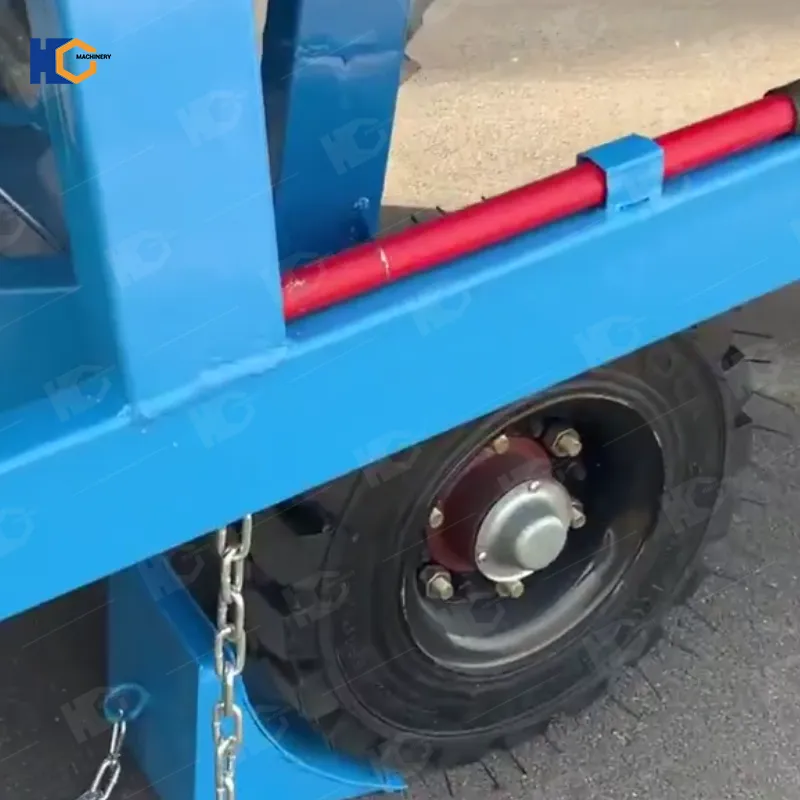
Proper Ramp Positioning and Setup
Once you have completed your pre-operation checks, it's time to position the truck and ramp. Proper setup is crucial to ensuring the safety of both workers and cargo.
Positioning the Truck
Position the truck at a safe and level distance from the ramp. The angle between the truck and the ramp should allow the ramp to rest securely on both the ground and the truck bed. If the truck is at a sharp angle, it may cause instability when the ramp is used, resulting in an increased risk of accidents.
For hydraulic ramps, the truck’s hydraulic system should be properly calibrated to match the desired height. For manual ramps, ensure the truck is positioned in a way that aligns with the ramp’s incline.
Ensuring Ramp Stability
Once the ramp is in place, ensure that it is properly supported at both ends. The ramp should be level with the truck bed and securely fixed at the loading dock or ground level. Using safety locks or clamps to hold the ramp in place will prevent it from sliding or shifting during loading or unloading.
Using Safety Chocks
Wheel chocks are a crucial part of ramp safety. Position wheel chocks beneath the truck’s wheels to prevent accidental movement while the ramp is in use. The chocks should be placed at both the front and rear of the wheels, especially when the truck is parked on an incline.
Parking Brake and Gear
Ensure that the truck is in park or neutral and that the parking brake is engaged. This will help prevent the truck from moving while the ramp is in use. Workers should also be reminded to check for any signs of instability before beginning the loading/unloading process.
Loading/Unloading Procedures
Once the ramp is securely in place, it’s time to begin the loading or unloading process. Safety during this phase is essential for avoiding injuries and ensuring the cargo is transferred without incident.
Guidelines for Loading and Unloading
Slow and Steady Movement: When transporting goods, always move the load slowly and carefully. Sudden movements can lead to spills, equipment damage, or even injuries. Ensure that forklifts, dollies, or hand trucks are used appropriately to move goods across the ramp.
Centered Load: Always ensure that the load is centered and evenly distributed. If the load is unbalanced, it can cause instability on the ramp, leading to accidents. This is especially important when using powered or hydraulic ramps.
Lifting Equipment: When handling heavy or bulky items, consider using lifting equipment such as forklifts or conveyor systems to ease the load and reduce strain on workers. Using the proper lifting gear also helps maintain balance and stability on the ramp.
Supervising the Operation
Clear communication is key during the loading and unloading process. Supervisors should be on-site to guide workers and ensure everyone is following the correct procedures. Workers should be assigned specific tasks, and there should be constant monitoring of the ramp's stability.
Worker Safety
All workers should maintain a safe distance from the edge of the ramp while it’s in use. Workers should wear the appropriate personal protective equipment (PPE), such as steel-toed boots, gloves, hard hats, and reflective vests, to minimize the risk of injury.
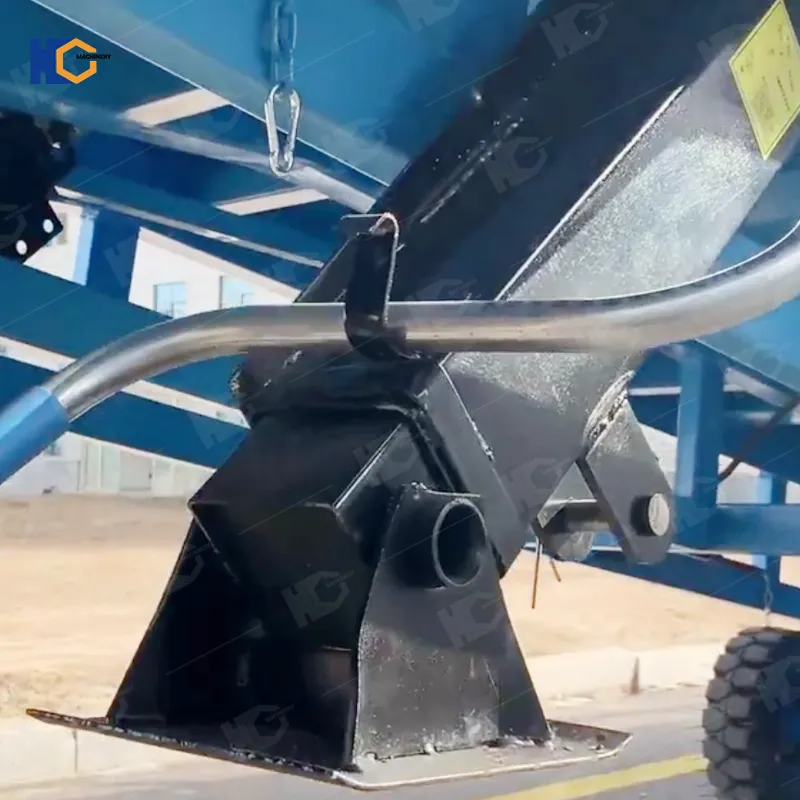
Special Considerations for Different Loads
Different types of loads may require special precautions during the loading and unloading process. It’s important to adjust your procedures to account for these variations.
Handling Heavy or Fragile Items
Heavy Loads: For very heavy items, use ramps rated for higher weight capacities. Heavy loads should be handled with extra care to avoid putting too much strain on the ramp or the truck. It may also be necessary to adjust the incline or use additional lifting equipment to facilitate safe transfer.
Fragile Loads: When moving fragile or sensitive items, ensure that the ramp surface is smooth and free of any obstacles that could damage the cargo. In some cases, using a padded or non-slip surface may be beneficial to protect fragile items.
Multi-Tiered Ramps
For oversized or bulky shipments, multi-tiered ramps may be necessary. These ramps require additional setup and careful supervision, as they can pose more significant risks due to their complexity and the higher heights involved.
Weather Conditions
Always consider weather conditions when operating a loading ramp. Rain, snow, or ice can make ramps slippery and increase the risk of slips, trips, and falls. If the ramp is exposed to the elements, use non-slip mats or coatings to maintain traction.
Common Mistakes and How to Avoid Them
Several mistakes can compromise the safety of loading ramp operations. Here are some common pitfalls and how to avoid them:
Improper Ramp Positioning
Failing to position the ramp correctly can lead to instability. Always ensure that the ramp is aligned and securely locked in place before loading or unloading begins.
Overloading the Ramp
Overloading the ramp is one of the most common causes of accidents. Always check the ramp’s rated weight capacity and never exceed it.
Poor Communication
Lack of communication can lead to accidents. Workers should always communicate clearly with each other, especially when handling heavy or bulky items.
Ignoring Weather Conditions
Operating a ramp during inclement weather can be dangerous. Always assess the weather and conditions before beginning operations.
Post-Operation Procedures
After the loading and unloading process is complete, it's important to properly stow and maintain the ramp to ensure its longevity and readiness for future use.
Safely Stowing the Ramp
Once the operation is complete, secure the ramp in a safe, designated storage area. If the ramp is foldable or telescopic, ensure it is stored in its collapsed position to minimize the risk of damage.
Cleaning and Maintenance
Regular cleaning and maintenance are essential to keeping the ramp in good working condition. After each use, clean the ramp of dirt, debris, and moisture. Inspect it regularly for any signs of wear or damage.
Reporting Damage
If the ramp is found to be damaged or showing signs of malfunction, report it immediately. Damaged ramps should be repaired or replaced to prevent accidents.
Emergency Procedures and First Aid
Despite all precautions, accidents can still happen. In case of injury or emergency, the following procedures should be followed:
Ensure Safety: Make sure the area is secure and remove any immediate hazards.
Call for Help: Alert emergency services and first responders immediately.
First Aid: If trained, provide first aid to the injured individual. Basic first aid knowledge, such as CPR and wound care, can be invaluable in emergency situations.
Operating a truck loading ramp safely requires careful preparation, attention to detail, and adherence to established procedures. By following the steps outlined in this guide, you can significantly reduce the risk of accidents, protect workers, and ensure the smooth transfer of goods. Regular training, communication, and equipment maintenance will further enhance safety, making the loading ramp a tool that can be relied upon for years to come.
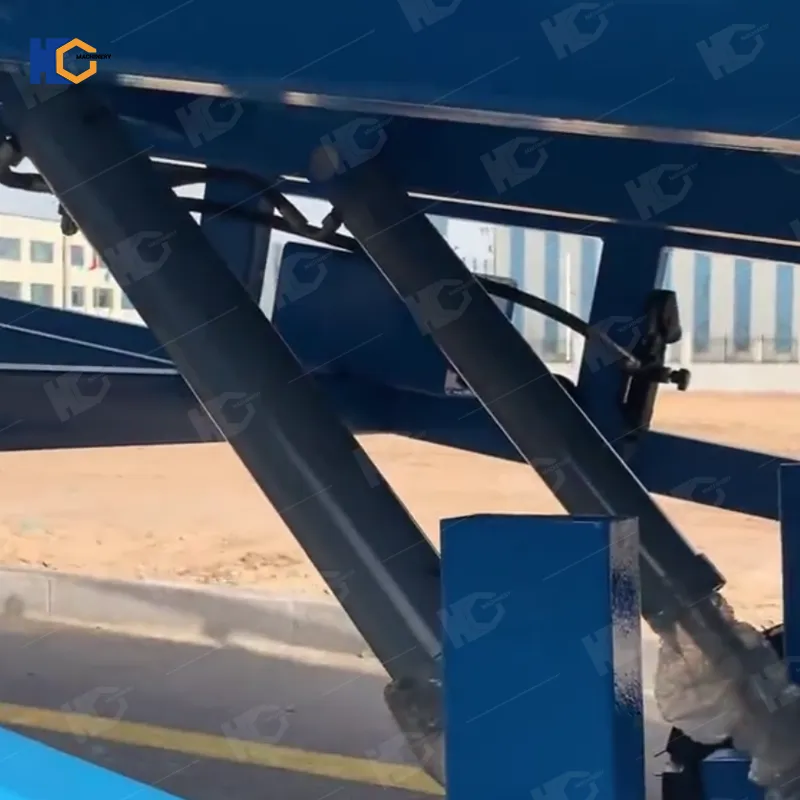
Contact JNHC Lift for Your Loading Ramp Solutions
If you or your team are in need of a reliable, high-quality loading ramp, JNHC Lift is here to provide tailored solutions to meet your specific needs. As a trusted manufacturer of durable and efficient loading ramps, we specialize in designing and producing ramps that are suitable for a wide range of industries, including logistics, warehousing, construction, and more.
At JNHC Lift, we understand the importance of safety and efficiency when it comes to loading and unloading operations. Our ramps are built to offer maximum stability and load capacity, ensuring that your operations run smoothly and safely. Whether you're looking for manual, hydraulic, or customizable ramps, we can deliver products that are designed to suit your unique requirements.
We take pride in offering not only top-quality products but also comprehensive after-sales services. From installation guidance to regular maintenance support, we ensure that your loading ramp operates at its best, minimizing downtime and increasing productivity. Our team of experts is always ready to assist with technical support, helping you maximize the lifespan and efficiency of your equipment.
If you're sourcing loading ramps directly from the factory, JNHC Lift offers a seamless experience, from the design phase to the final delivery. With our commitment to customer satisfaction and our focus on delivering excellent service, we make it easy for you to get the right ramp for your needs. Feel free to contact us today to discuss your requirements, and let us help you optimize your loading operations with our high-quality solutions.
JNHC Lift ensures that safety, reliability, and customer satisfaction are at the forefront of everything we do. Contact us for more information or to place an order!
